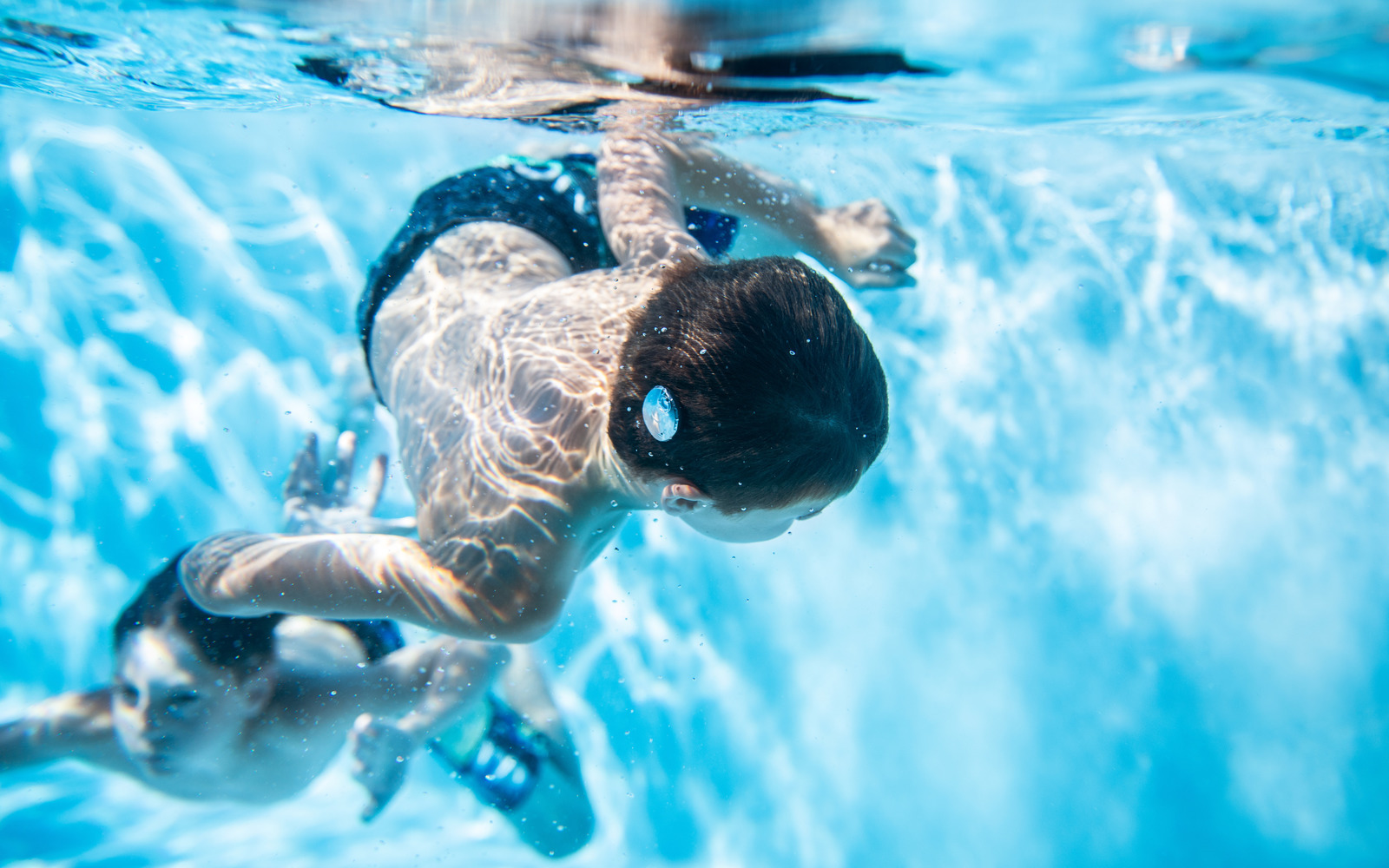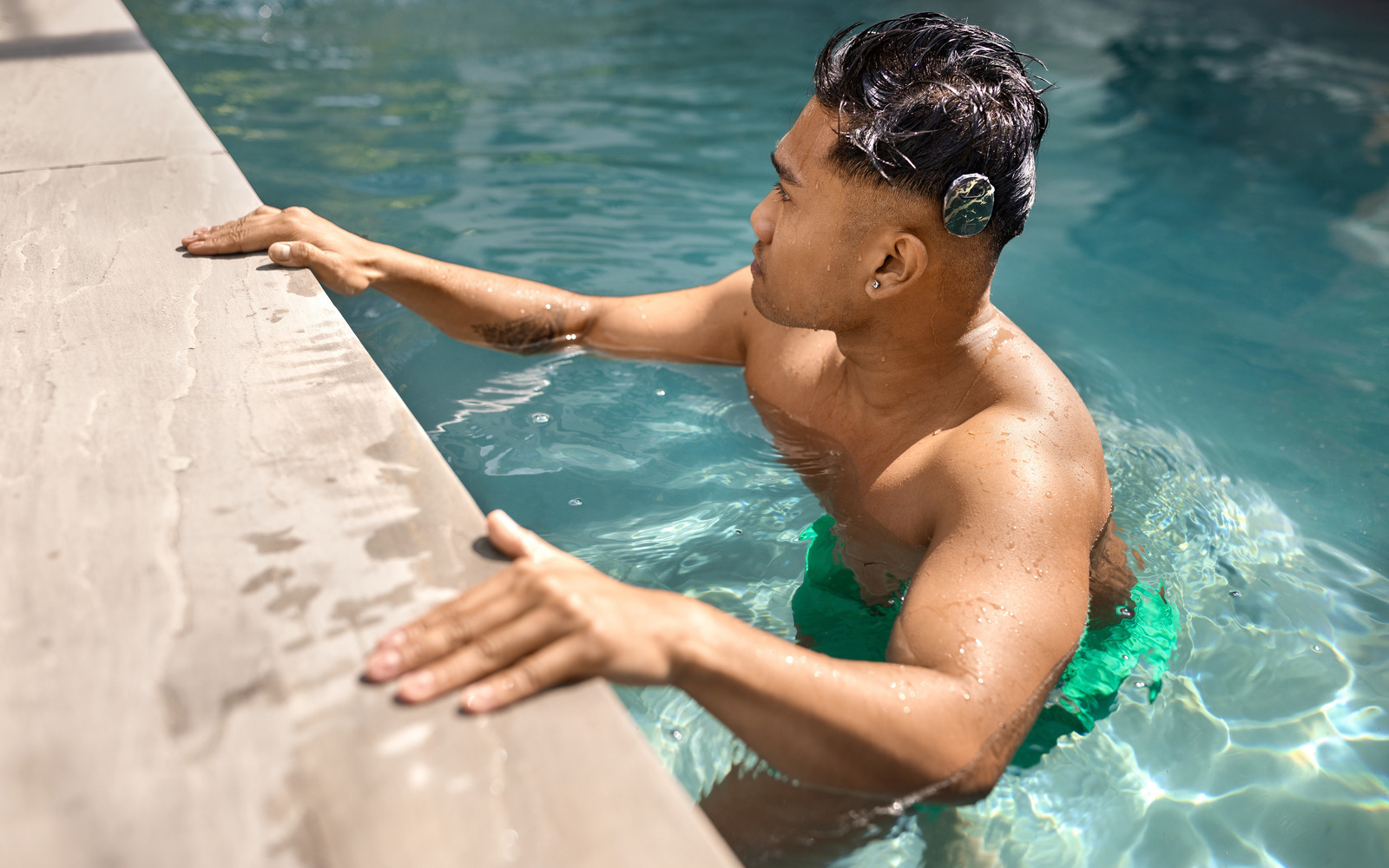
MED-EL
Published Jul 21, 2025
Can You Swim With a Cochlear Implant?
Want to make a splash with your cochlear implant? In this article, we cover everything you need to know, from waterproof accessories to IP ratings. Let’s dive in.

Can You Go Swimming With a Cochlear Implant?
Afterwork laps. Ocean dips. Paddling in the kiddie pool. Swimming has to be one of life’s greatest pleasures. And the good news? You can swim with a cochlear implant and still hear all the sounds around you. It’s just important to make sure your audio processor is waterproof before you jump in—read on to find out more.
P.S. The information on this page only covers MED-EL cochlear implants. If your CI is from another brand, it’s best to check directly with your cochlear implant team.
Swimming With a Cochlear Implant: What to Know
Cochlear implant systems have two parts. The implant itself is surgically implanted and sits below the skin. As soon as you have healed from surgery, you can go swimming with it.
But the external part of the system—the audio processor—might need some extra protection before you start swimming. This depends on which audio processor you have and the kind of swimming you’ll be doing.

Waterproof Audio Processors: RONDO 3 and SONNET 3
Our latest-generation audio processors, RONDO 3 and SONNET 3, have an IP68 rating—similar to the ratings of top-range smartphones. That means they are waterproof for immersion in fresh water up to a maximum depth of 1 meter for 60 minutes. So you can swim with your RONDO 3 or SONNET 3 for short periods of time, as long as the water is fresh and you don’t go deeper than one meter.*
For salt or chlorinated water, as well as longer swimming sessions or diving, you’ll need to use the WaterWear accessory (see below).
* SONNET 3 and RONDO 3 have an IP68 rating: Waterproof for immersion in fresh water up to a maximum depth of 1 meter for 60 minutes. WaterWear should be used in chlorinated or salt water and when participating in prolonged water activities. SONNET 3 EAS is water resistant and has an IP54 rating.
Swimming With Other MED-EL Audio Processors
Our older audio processors, like RONDO 2 and SONNET 2, have a water-resistant design with an IP54 rating. This means that you can’t submerge them in water, but splashes are okay.
Good news though: You can still go swimming with your older audio processor. You just need to put on WaterWear first.
"Without the WaterWear equipment, Morgan wouldn’t be able to access sound in the water, and as Morgan enjoys water so much, this is such an incredible piece of equipment."
Lenna
CI user Morgan's mom
How to Make Your Audio Processor Waterproof With WaterWear
It’s easy to make your MED-EL audio processor fully waterproof. You just need to slip on a reusable WaterWear cover. Designed for comfort and hearing performance, WaterWear lets you use your audio processor in fresh, salt, and chlorinated water up to a depth of four meters.
This video below explains how WaterWear works.
WaterWear works with any SONNET, RONDO, or SAMBA series audio processor, as well as OPUS 2.
Can You Swim With a Bone Conduction Implant?
Yes, you can also swim with your BONEBRIDGE bone conduction implant! Just put WaterWear on your SAMBA or SAMBA 2 audio processor before you dive in.
What About Middle Ear Implants?
Yes, you can swim with your VIBRANT SOUNDBRIDGE middle ear implant. To make your SAMBA or SAMBA 2 audio processor fully waterproof, you’ll need to put the WaterWear cover on first.
More Tips for Swimming With a Cochlear Implant
- Remember that zinc-air batteries don’t work with WaterWear—swap them for another type of battery, such as a rechargeable one, instead.
- Using a swimming cap or sports headband can be useful for keeping your audio processor in place.
- The pool can be very noisy, so agree on a signal to use to get your child’s attention.
- Prep your child for swimming lessons by pre-teaching swimming vocabulary and letting their instructor know about their CI.
Got more questions about swimming with a cochlear implant? Let us know in the comment section below!
References

MED-EL
Was this article helpful?
Thanks for your feedback.
Sign up for newsletter below for more.
Thanks for your feedback.
Please leave your message below.
Thanks for your message. We will reply as soon as possible.
Send us a message
Field is required
John Doe
Field is required
name@mail.com
Field is required
What do you think?
© MED-EL Medical Electronics. All rights reserved. The content on this website is for general informational purposes only and should not be taken as medical advice. Contact your doctor or hearing specialist to learn what type of hearing solution suits your specific needs. Not all products, features, or indications are approved in all countries.

MED-EL

MED-EL



